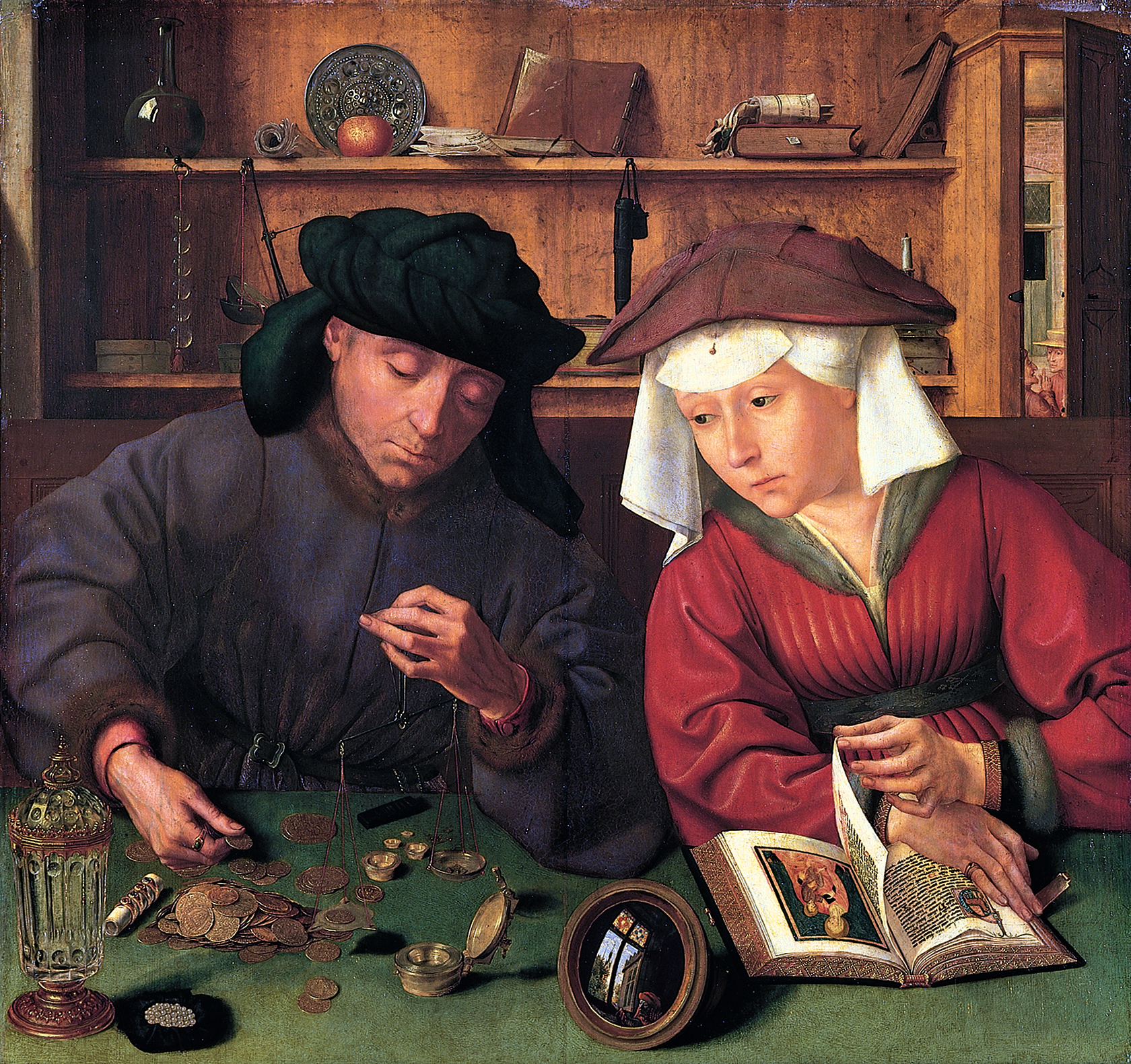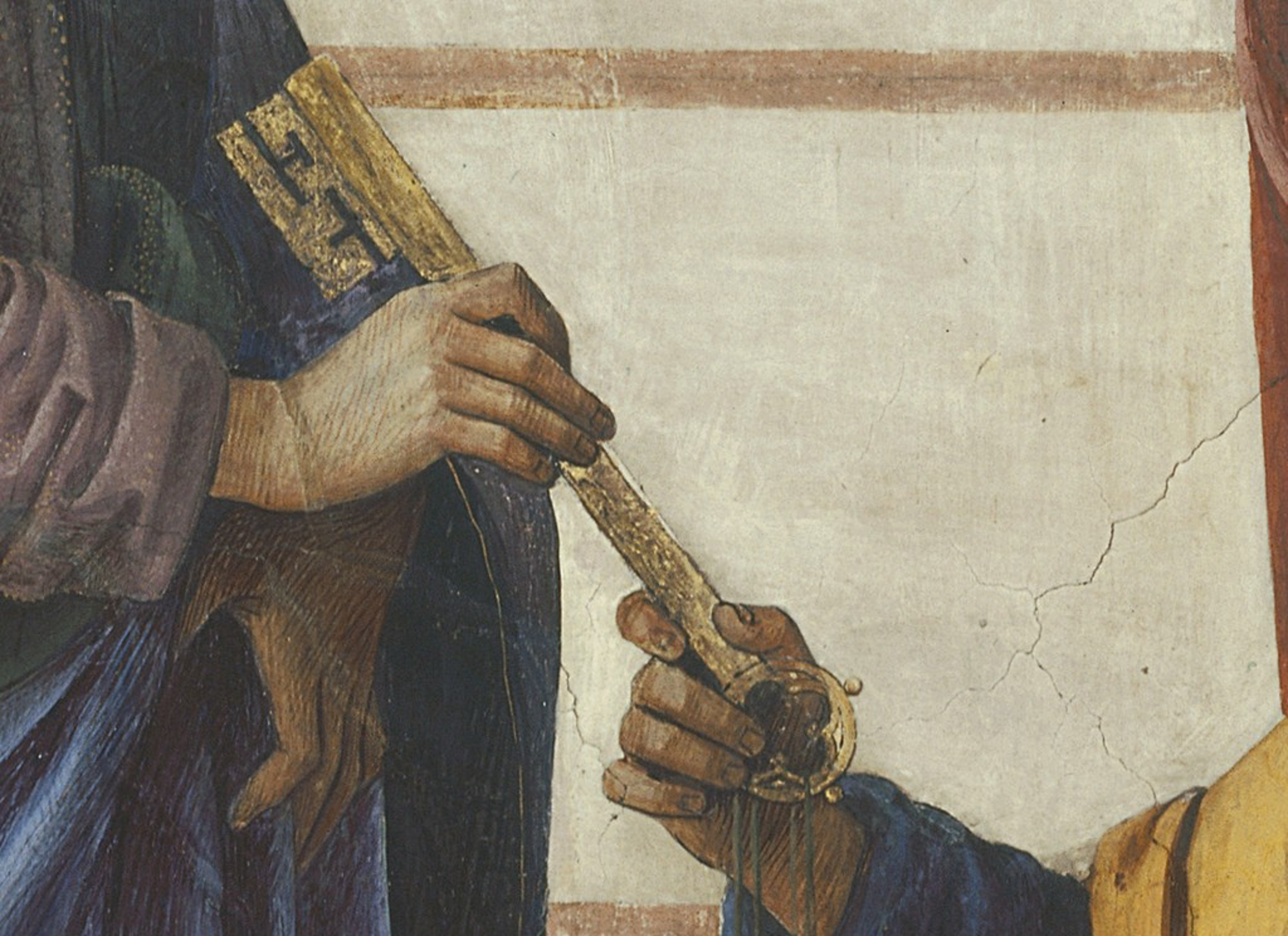
Quinten Metsys
Money-changer and his Wife
Oil on panel
74 × 68 cm
1514
Musée du Louvre, Paris
Photo Credit: Erich Lessing/ART RESOURCE, N.Y.

Perugino, Pietro, Umbrian
Christ Giving the Keys to Saint Peter
Fresco
3.48 × 5.70 m
1481-1482
Sistine Chapel, Vatican, Rome